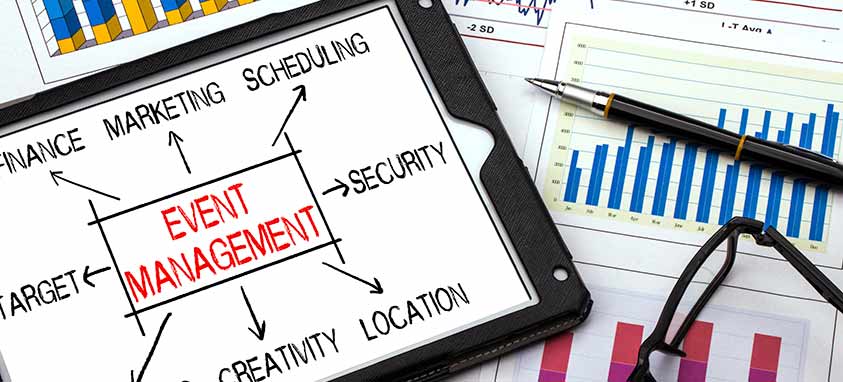Event planners are often asked to do more with less – less time, less resources and, especially, less money. The secret to putting together high-caliber events on a shoestring budget may be simpler than imagined. It all boils down to knowing how to plan properly.
One of the biggest budget-drainers is last-minute planning. That’s why it’s crucial to determine costs associated with a variety of line items as soon as possible. Event budgets should be considered and can change during all phases of the process, so planners should be prepared to adapt. Also, don’t forget to include a contingency amount outside of these areas to allow for flexibility within your entire budget.
Typical items to budget for include:
–Venue rental
–Parking
–Transportation
–Security
–Food and beverage
–Equipment rental (tables, chairs, lifts)
–Audio/visual technology
–Decor (furniture, table linens, centerpieces, perimeter scenic)
–Entertainment
–Activities/interactive elements (photo booths, beer/wine tasting, etc.
–Website/collateral/printing and graphic design
–Website registration
–Invitations
–Name badges
–Signage
–Programs
–Itineraries
–Attendee gifts
–Labor and delivery fees
–Staff fees (parking, meetings, onsite expenses)
The Power of Negotiation
A planner should always know that anything is negotiable, including some things more than others. Start with the venue and see if the flat rental fee can be reduced; or if it can include extras such as free parking onsite or equipment use. If planners are unsure of what is negotiable and what isn’t, don’t be afraid to ask. Once a contract is signed with the venue, much of the bargaining power is lost, so be sure to negotiate early.
Food and beverage is a large line item in a budget. Check with the caterer to see if they can lower their rates or offer an option outside of their typical package that would better fit your needs and budget.
For furniture and decor, consider working with an event partner that offers customizable rental options. Other vendors that offer equipment rental, audio/visual technology, entertainment and interactive elements generally have standard pricing sheets, but many are willing to negotiate if asked. Furthermore, most vendors will provide event management partners with discounted planner or industry rates.
Do not make the mistake of thinking that you’re limited to using recommended vendors from the venue. In many cases, bringing in an outside vendor may be allowed and will often result in savings. But be sure to read your venue contract thoroughly, especially so you do not face additional charges for choosing a vendor outside of their preferred list.
Money-Saving Moves
Negotiating is not the only tool when it comes to saving money. By following some key practices, limited funds can go further than you would think. Keep these budget-friendly options in mind for your next event:
–Planners don’t need to rely on elaborate, expensive props to create the perfect ambience for an event. Knowing how to integrate lighting in a few key places—such as the entrance, stage, bar or in table decor—can enhance the space without breaking the bank.
–Make sure to ask if you are required to use the audio/visual vendor recommended by the venue. Determine which components are required and which ones can be minimized or eliminated.
–Work with an event partner that has props, furniture, centerpieces and equipment from past events—many of these can be customized for your particular needs.
–Invest in reusable event materials, such as branding elements and signage. Rather than adding the name and date of the event on each new sign and banner, use a more basic design that can be updated for future events.
Andrea Hansen is director of event services at metroConnections, an event services company headquartered in Minneapolis. Hansen oversees the event services division and helps provide clients with new ideas and fresh concepts.





